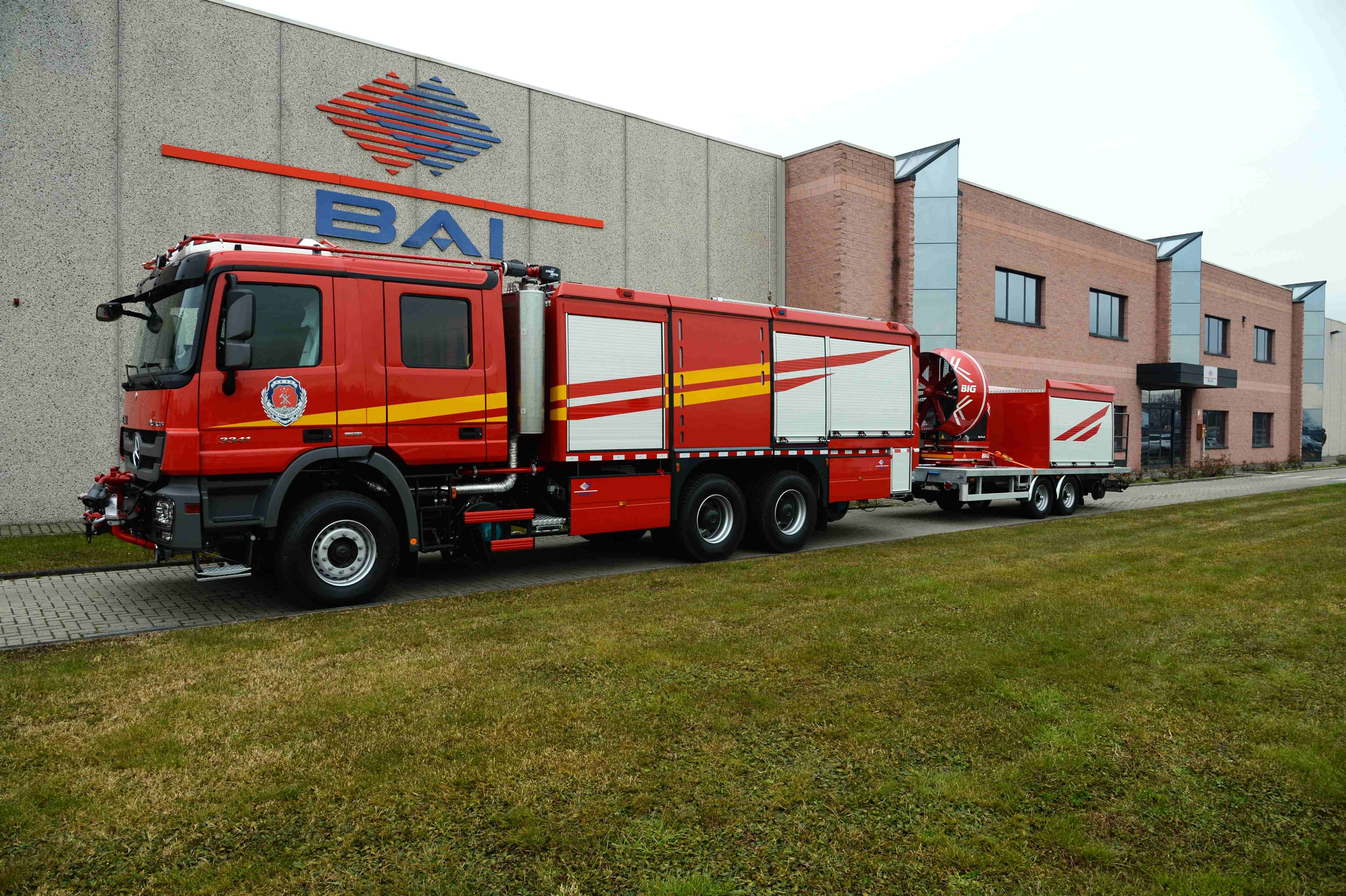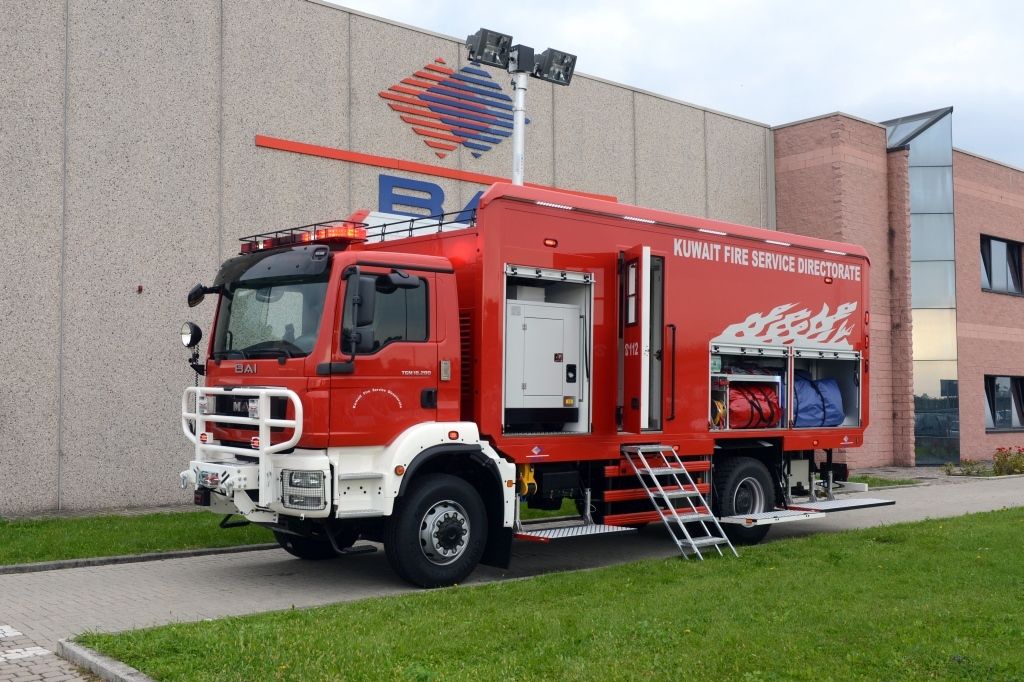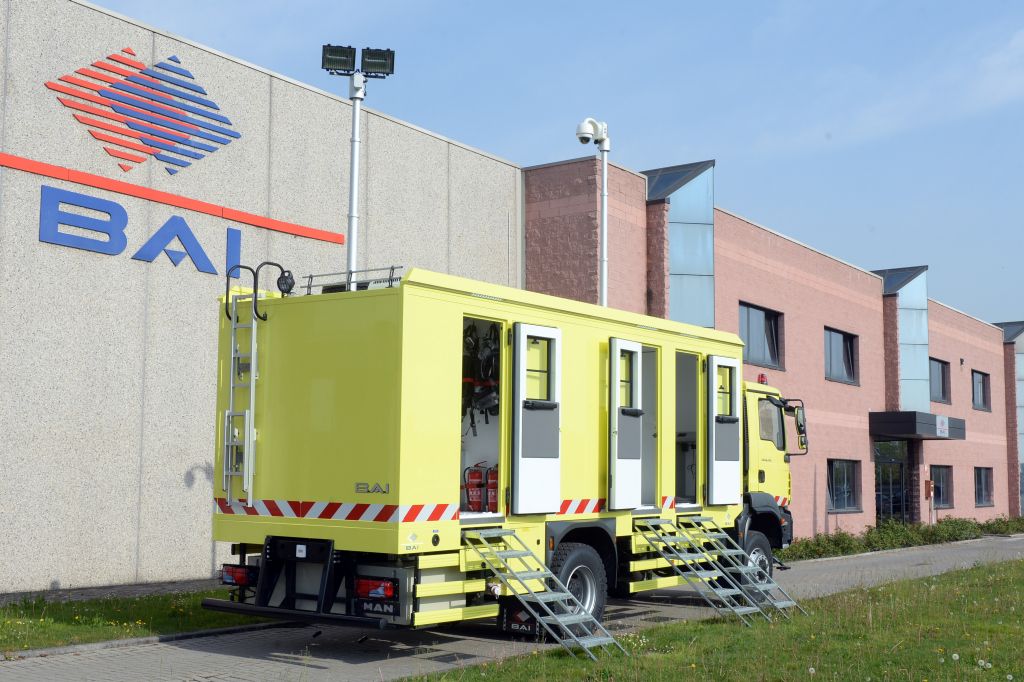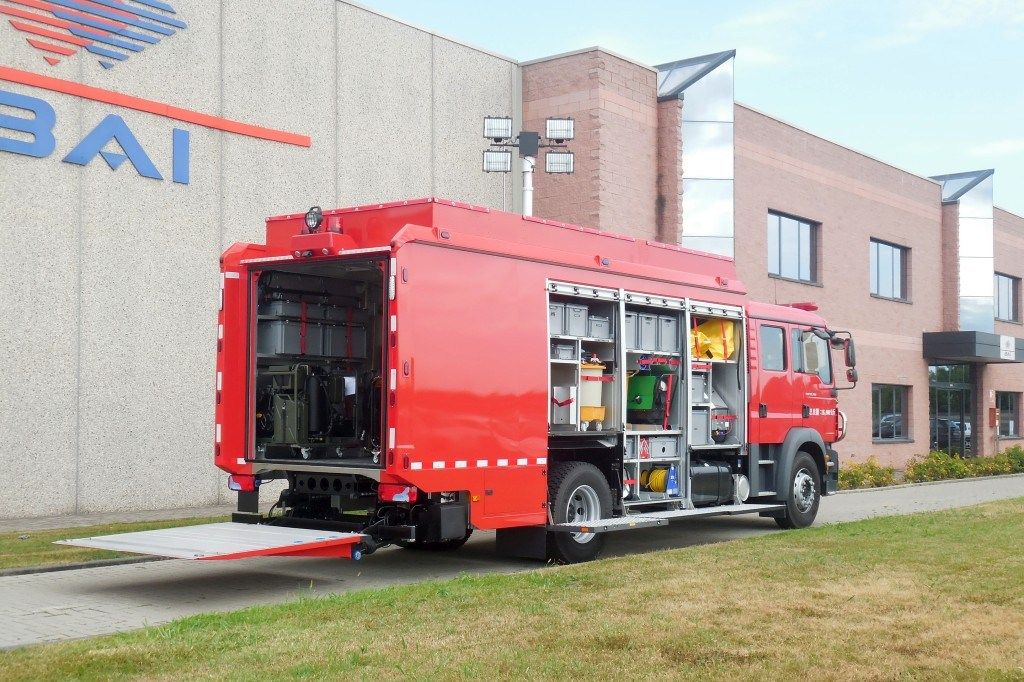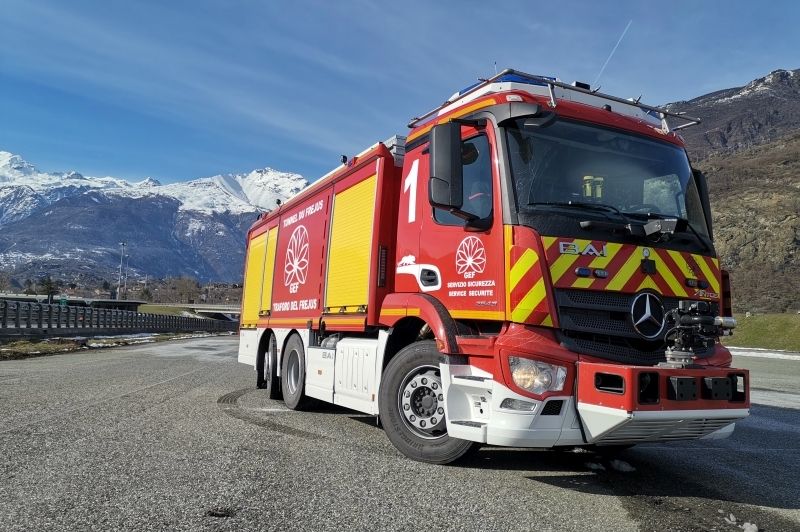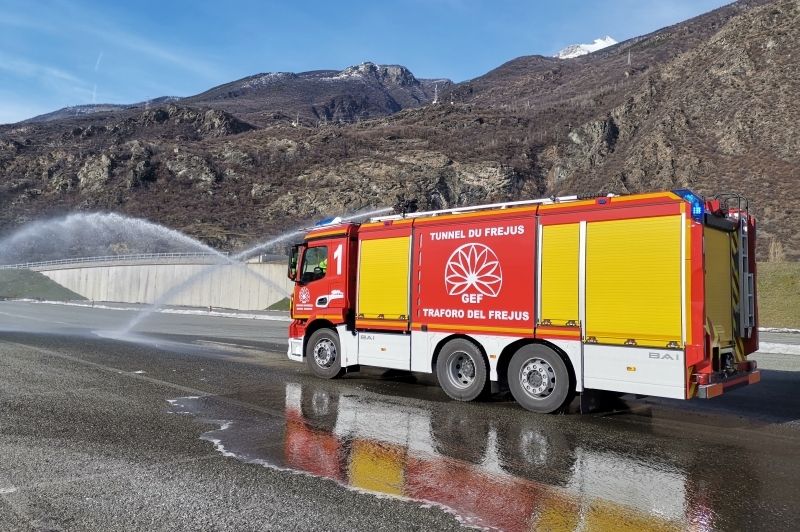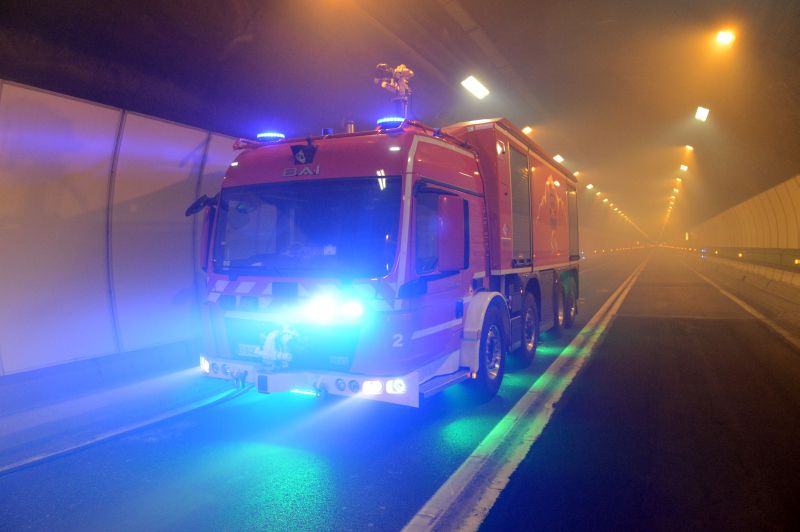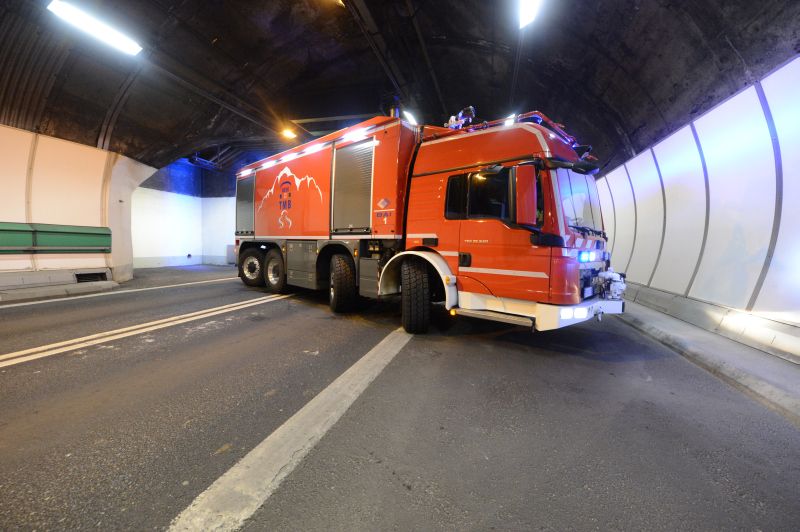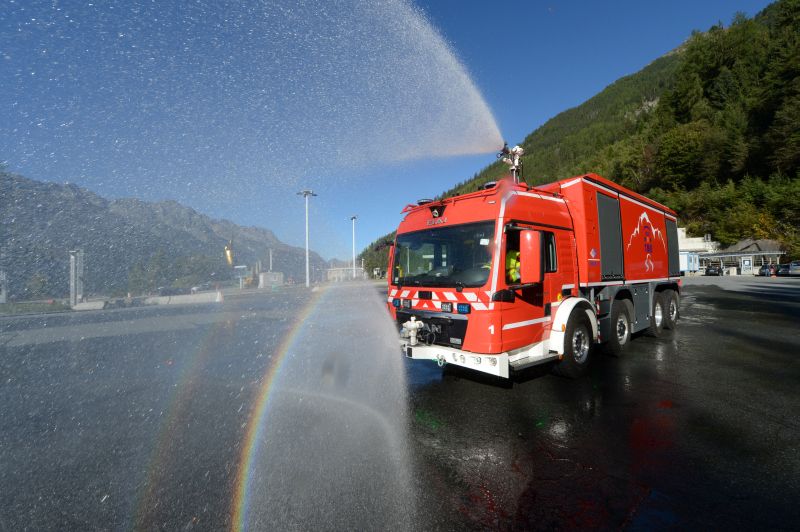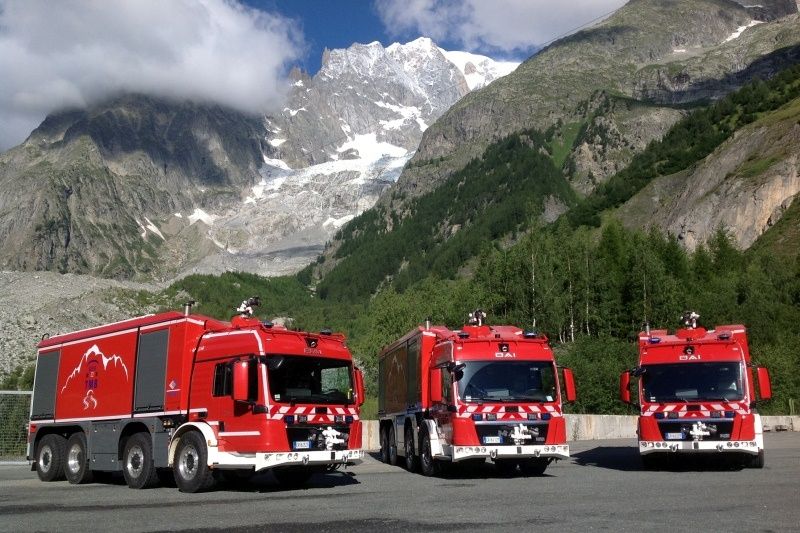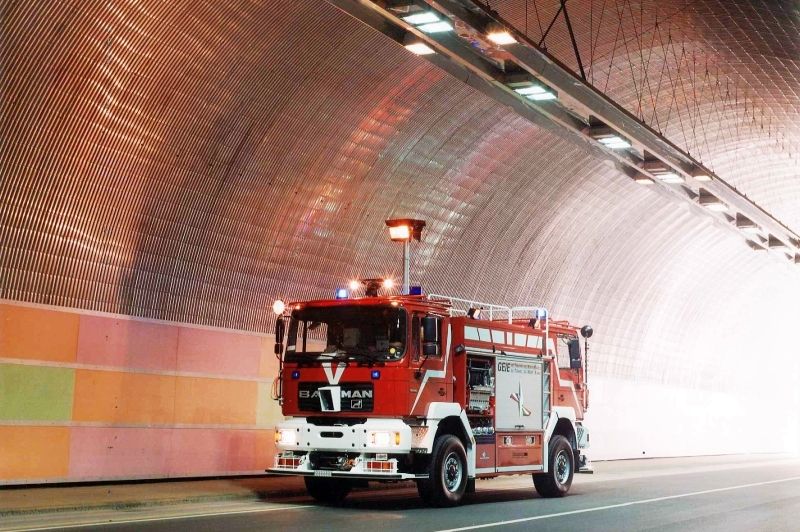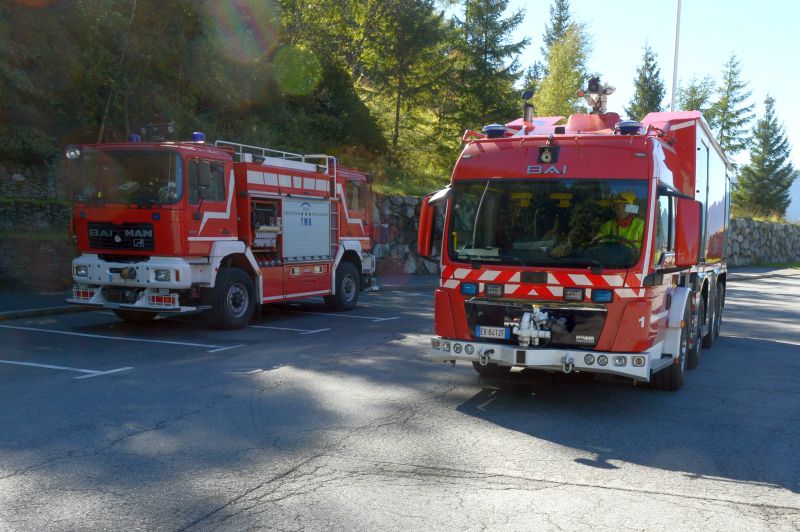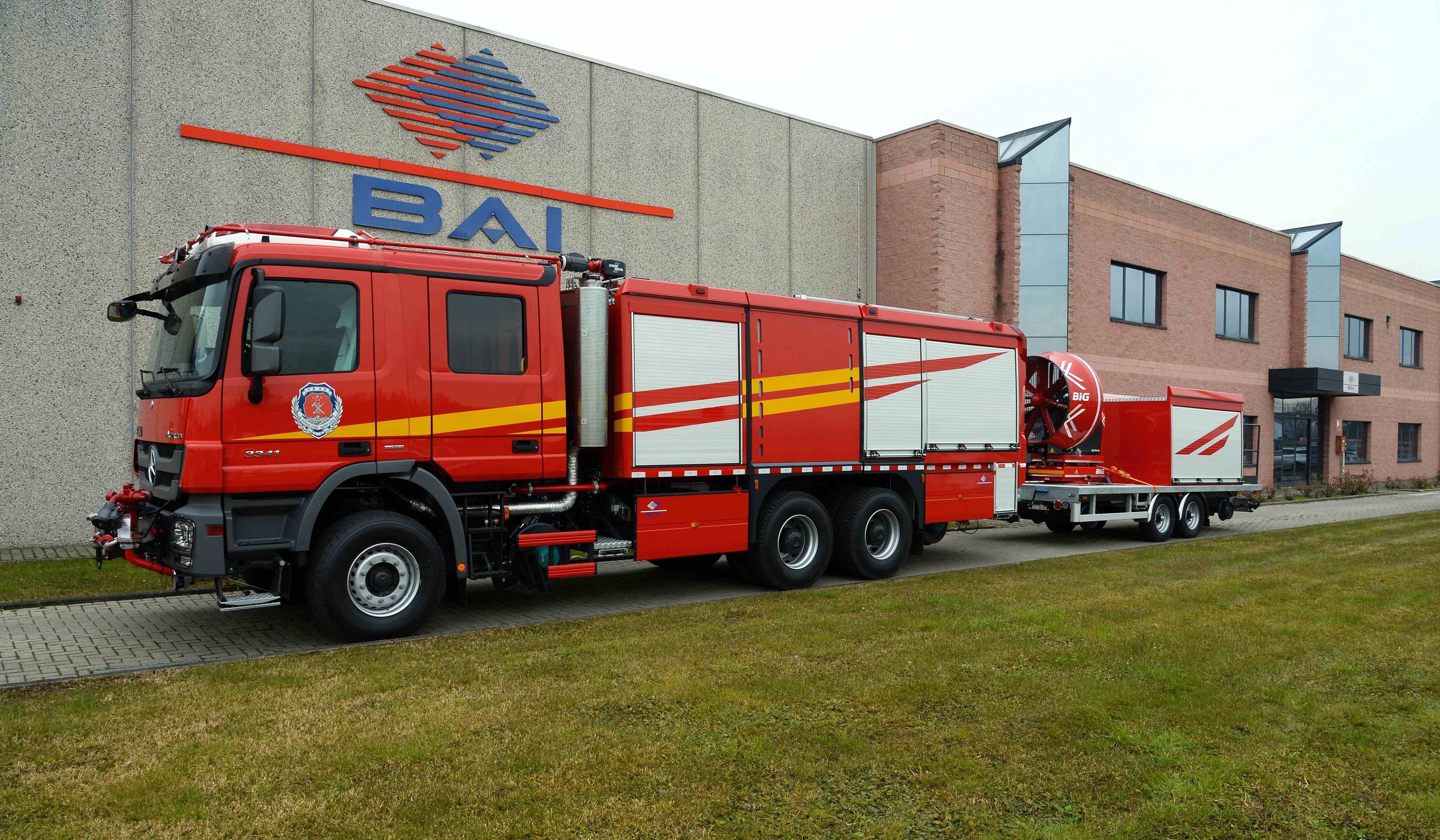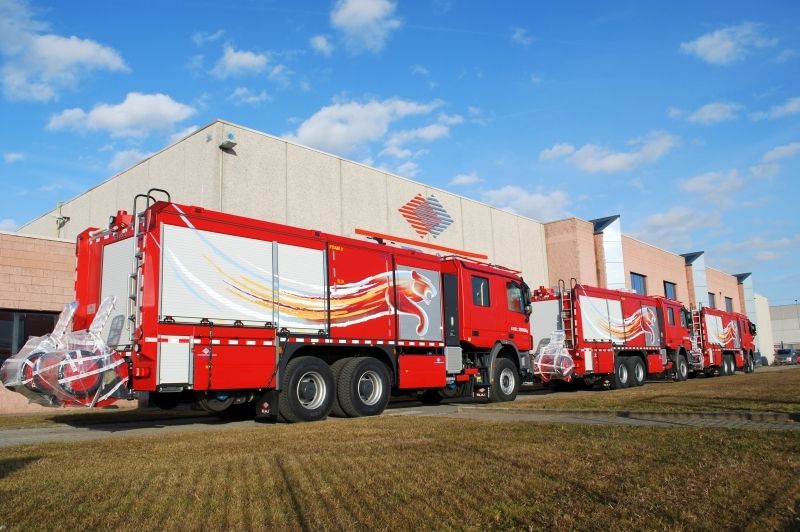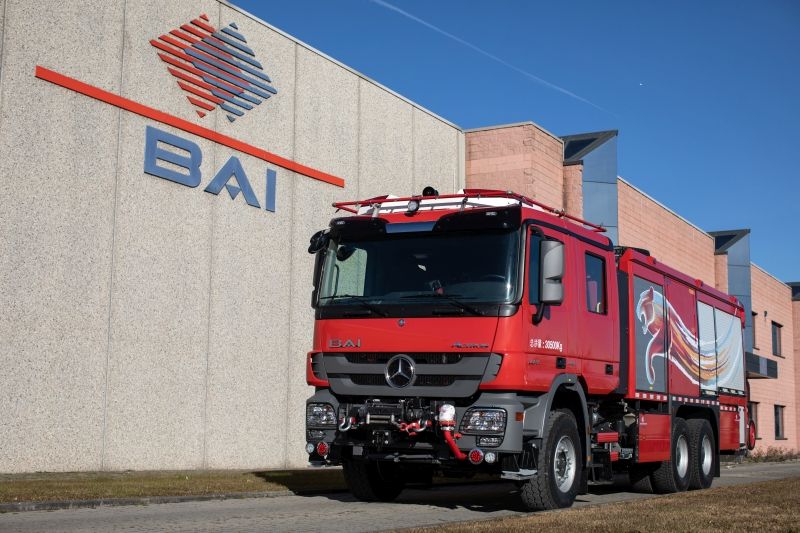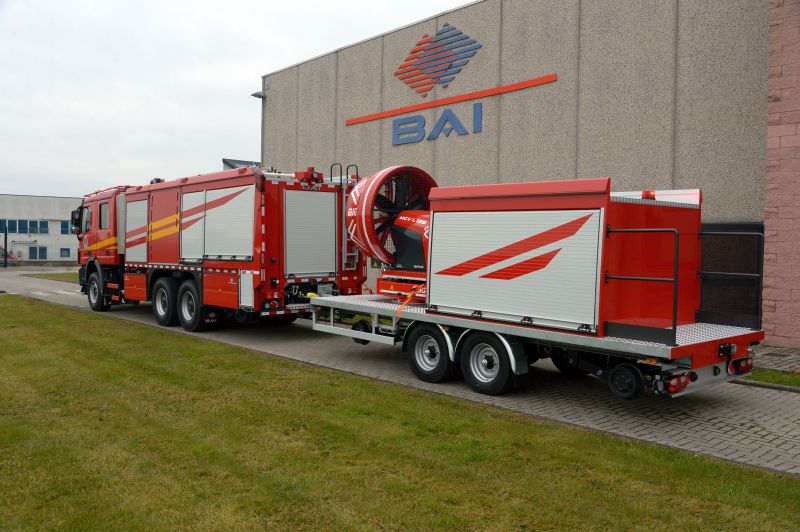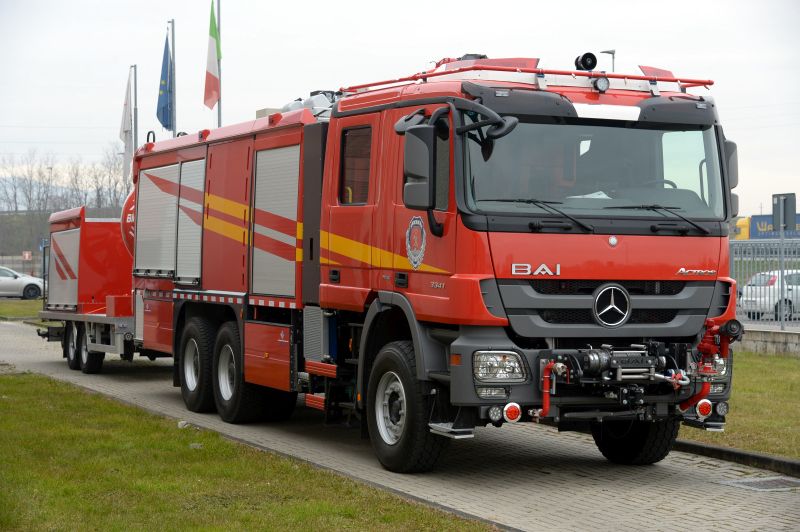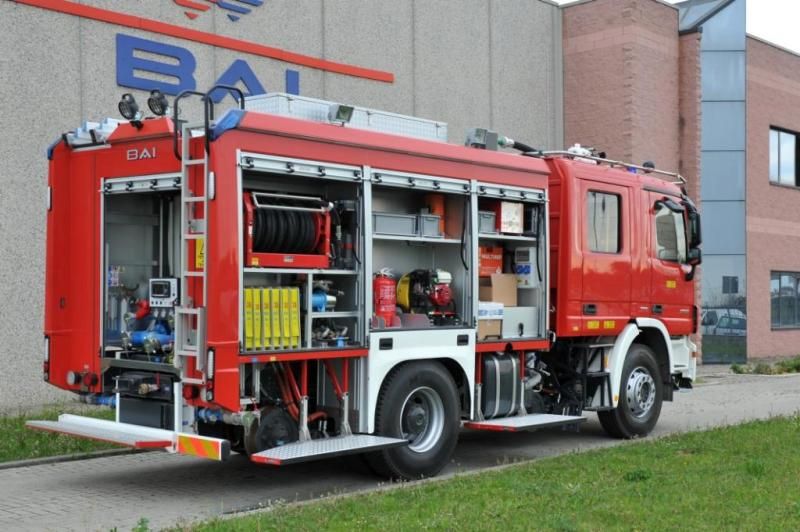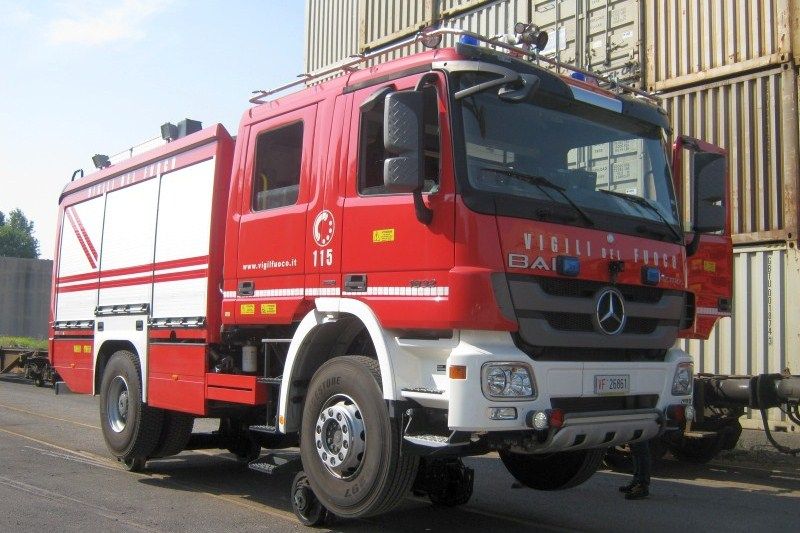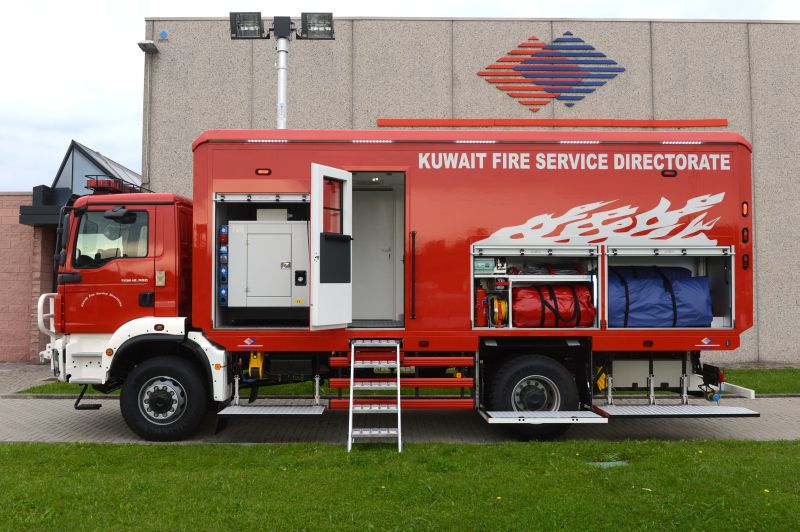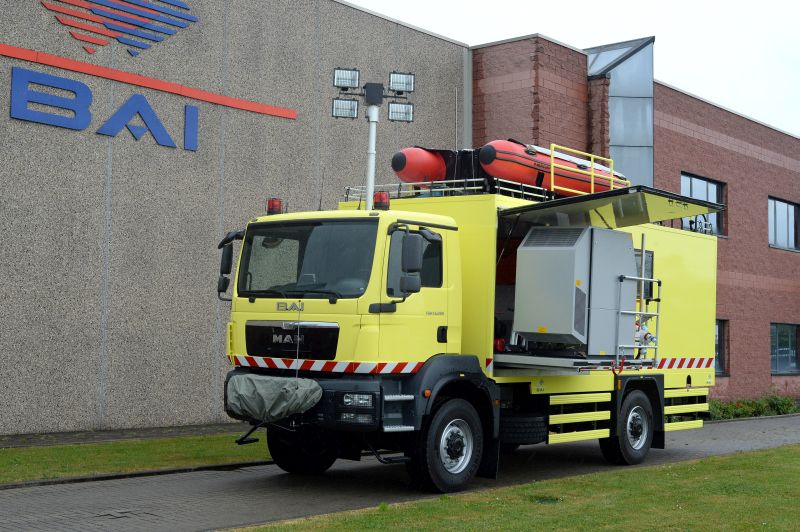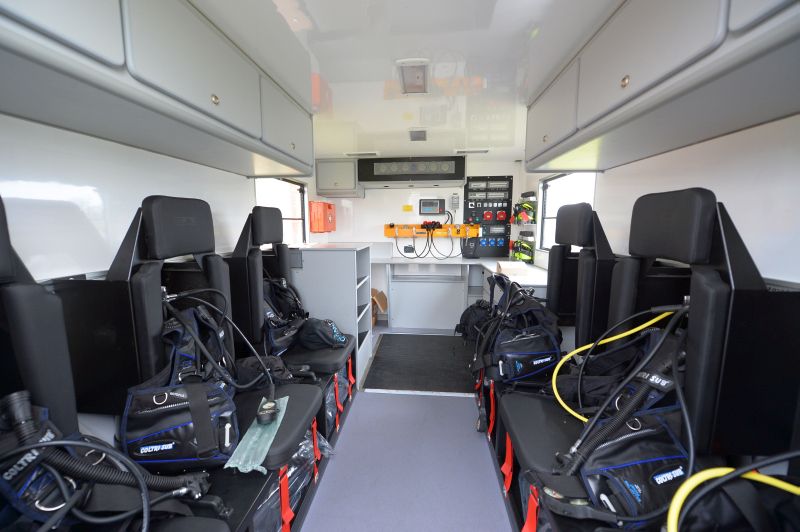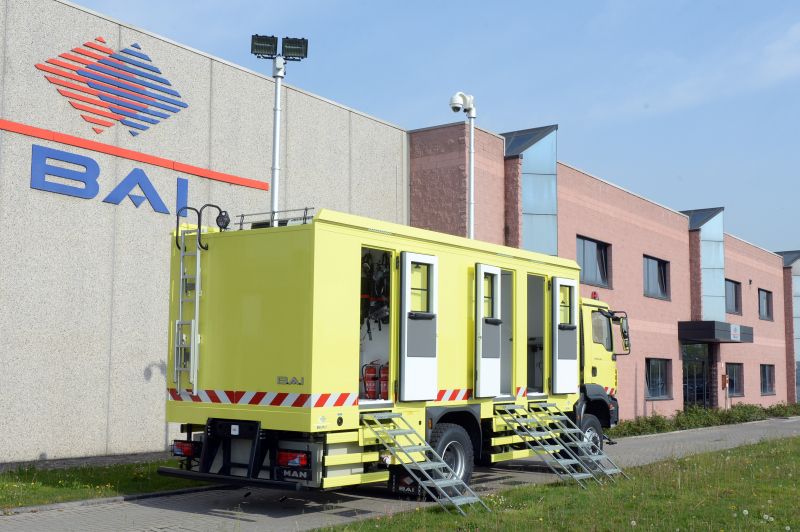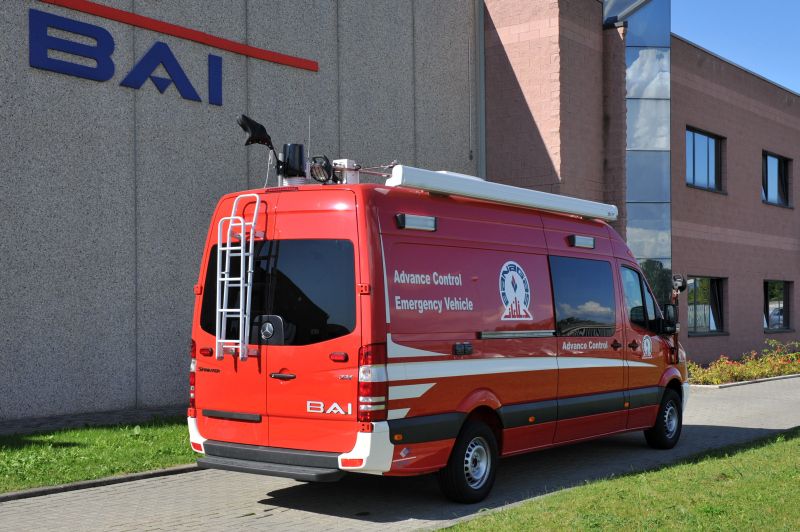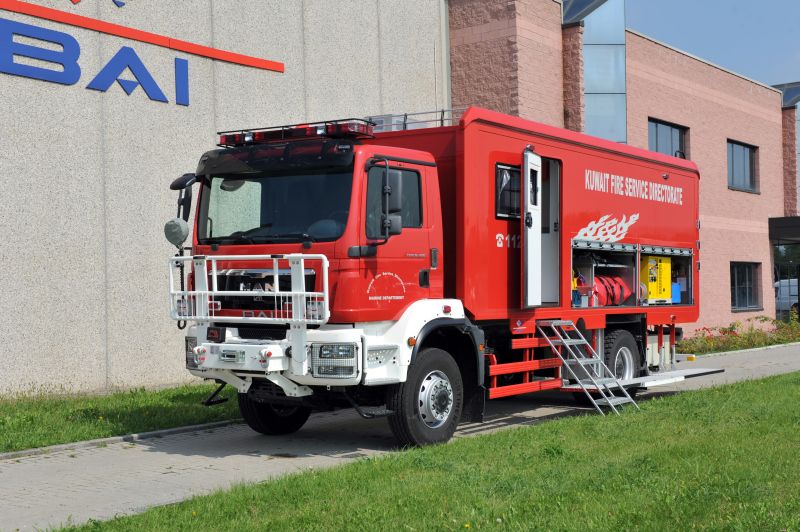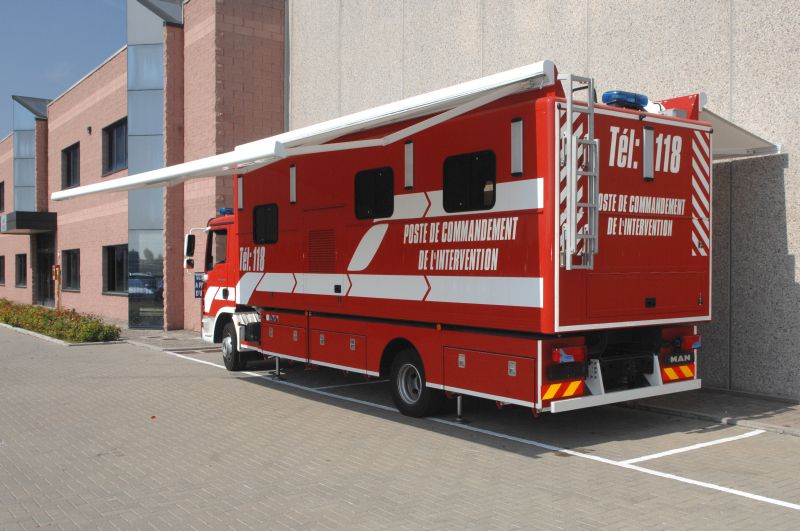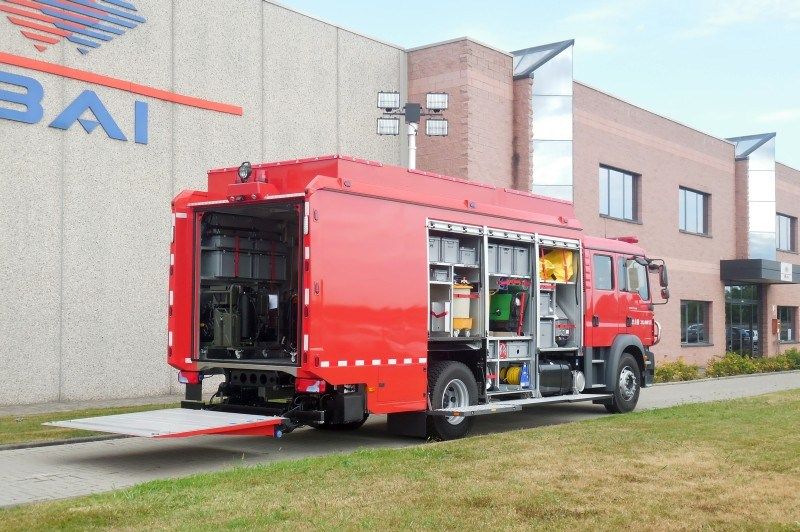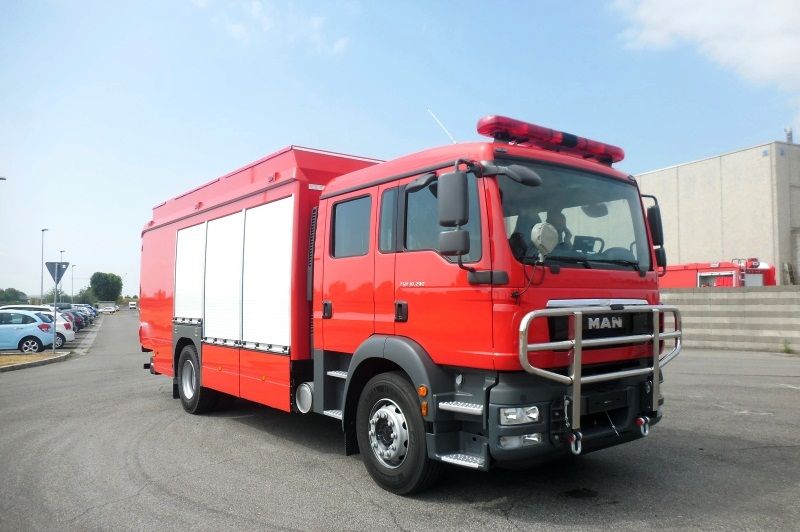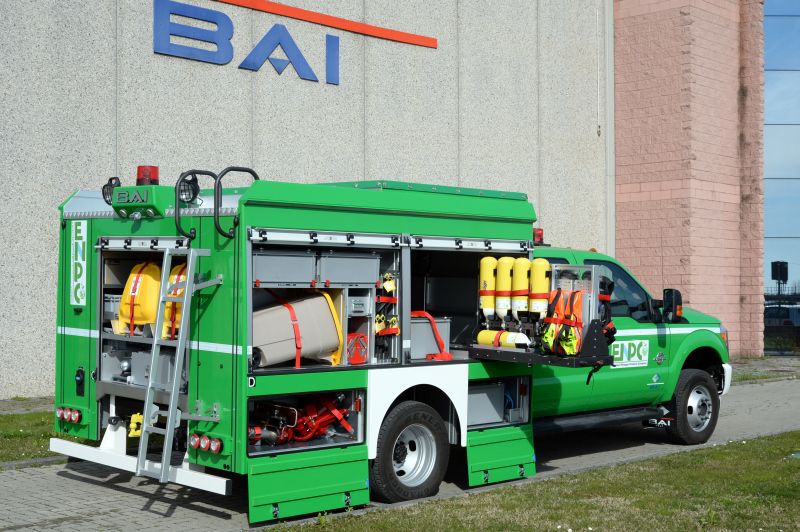Special Firefighting Vehicles
Vehicle - Tunnel Rescue
BAI PROTEUS VSAT 13000 S. Tunnel Rescue Vehicle
BAI PROTEUS VSAT 13000 S includes top quality firefighting technology and is specially designed for firefighting operations in high temperatures, isolated and low visibility tunnel environments. BAI PROTEUS tunnel rescue vehicle enables a quick and massive fire attack in tunnels and reduced space environments. Chassis MAN TGS 35.540 8x6H BL. Cabin: 1 + 3 places. Cabin System Pressure (air input device). BAIWAY Bodywork. Water tank 12150 L. Foam tank 1000 L. Thermo camera. Light mast. Firefighting equipments. PROTEUS VSAT 13000 S continues the tradition of JANUS, a tunnel rescue vehicle already delivered by BAI in 2000.
JANUS "two-faces" truck for tunnel fires. Absolute "World-Premiere"
The project for the construction of JANUS tunnel vehicle comes as a result of the serious incident occurred in 1999 in the Mont Blanc Tunnel. After this event, the Italian-French company EEIG-TMB (European Economic Group for the Interest of the Mont Blanc Tunnel) established a committee for carrying out a Plan to ensure 24 hours of prevention, safety and immediate action services for people and traffic in the tunnel. The action plan provided, among other things, the presence of three emergency locations permanently manned by Fire professionals.
BAI response to this project was a highly innovative solution and that was JANUS vehicle. Like Janus, the ancient god with two faces, the vehicle engineered by BAI to firefight in the tunnel has two faces: this means two twin cabins with two-way ride able to manoeuvre in tight spaces, reverse gear without manoeuvre and move laterally. JANUS tunnel rescue vehicle is built on MAN chassis and presents unique rescue capacities of its kind. The vehicle is equipped with two twin cabins as well as with four-wheel steering. 4000 L water tank and 500 L foam tank. Provided also with infrared cameras which allow easy driving in case of darkness and smoke, with breathing apparatus and self-protection systems both for the cabins and wheels. Both cabins are pressurized.
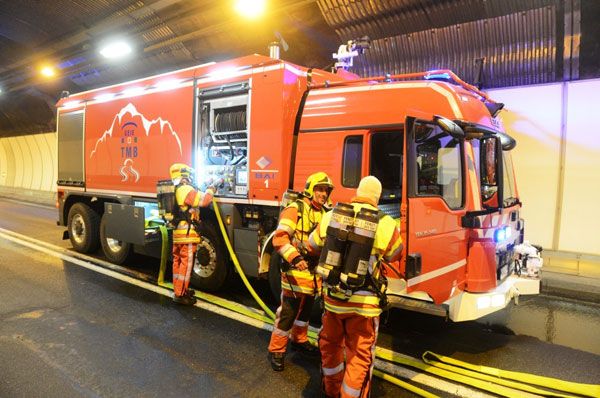
Vehicle - Rail Road Rescue
BAI rail road rescue fire fighting vehicle allows the use both on rail and road. The traction force for movement on rail is provided by a hydraulic power unit powered by chassis PTO. The lowering and lifting of the rail routes are made through hydraulic cylinders where it is located an emergency device for the lifting of the rail routes in case of eventual breakdowns.
The vehicle is capable of two-way driving with similar performances in both directions. A maximum rail speed both front and reverse of about 50 km/h is guaranteed.
The placement of BAI rail and road vehicle on the track is fast and made easy thanks to the adoption of lighting devices and appropriate video cameras connected to the display in the truck cabin and suitably directed to the railways and to the underlying area.
There are red and white lighting devices for the rail movement both on front and rear side. Moreover, there is a sound indicator of appropriate intensity for the reverse movements. The rail braking system, which is independent from the road one, provides pneumatic front and rear brakes. The drive is effected by a lever mounted in the cabin next to the gear selector of the vehicle, in an accessible position both for driver and co-driver(s). The rail braking system can be turned off, even during rail driving, when you need to use the vehicle’s brakes.
BAI control panel for the railway equipment is positioned in the cabin in an easily accessible position for both driver and operator. In order to ensure safe use of BAI bimodal firefighting vehicle even in difficult situations of emergency interventions, suitable devices are present on the vehicle such as: sequence of ascent on the track, rear axle locking, steering system locking, block valves, mechanical safety devices.
Breathing Apparatus Tender
They replenish cylinders which may have been used by firefighters tackling a protracted blaze or dealing with Hazardous Materials. Some Breathing Apparatus Tenders are also fitted with compressors which allow empty BA cylinders to be recharged on scene.
Most also contain a mobile workshop so that BA sets can be repaired at the scene of incident so that they can be made available for use again at the incident within in a very short space of time.
Command Control Unit
Essentially a command unit is a command centre, telecommunications hub and office on wheels employed for emergencies control.
Hazmat Vehicle
Hazardous materials or "HazMats", are solids, liquids, or gases that can harm people, other living organisms, property, or the environment. They are often subjected to chemical regulations. Dangerous goods include materials that are radioactive, flammable, explosive or corrosive, oxidizers or asphyxiants, biohazardous, toxic, pathogen or allergen substances and organisms, but also physical condititions as compressed gases and liquids or hot materia, including all goods containing such materials or chemicals, or may have other characteristics that render it hazardous in specific circumstances.
Hazardous Materials Appliances are of two main types:
- Decontamination Unit carry specialised equipment capable of decontaminating emergency workers and / or victims whom have come into contact with hazardous materials. The equipment carried is wide ranging and highly technical in nature.
- Scientific Support Unit, essentially a mobile laboratory which can attend a wide range of incidents (including chemical spills and fires) where early on-site scientific analysis and monitoring will speed up the detection process and allow firefighters and other emergency services to provide the correct response for the particular incident.
BAI Brescia Antincendi International Srl
Via Bruno Buozzi, 34
25021 Bagnolo Mella (BS), Italia
Ph. +39 030 6829311
Fax +39 030 6820592
VAT No. IT01697930988
Copyright © BAI Brescia Antincendi International Srl. All rights reserved.
-
![]()
TUV AUSTRIA EN ISO 9001:2015
TUV AUSTRIA EN ISO 14001:2015
TUV AUSTRIA EN ISO 45001:2018





